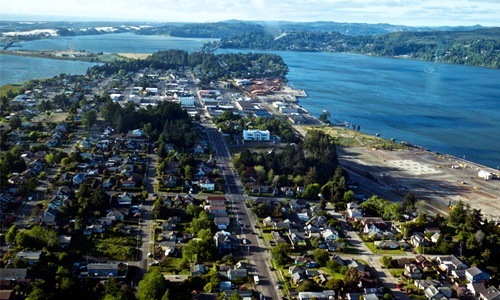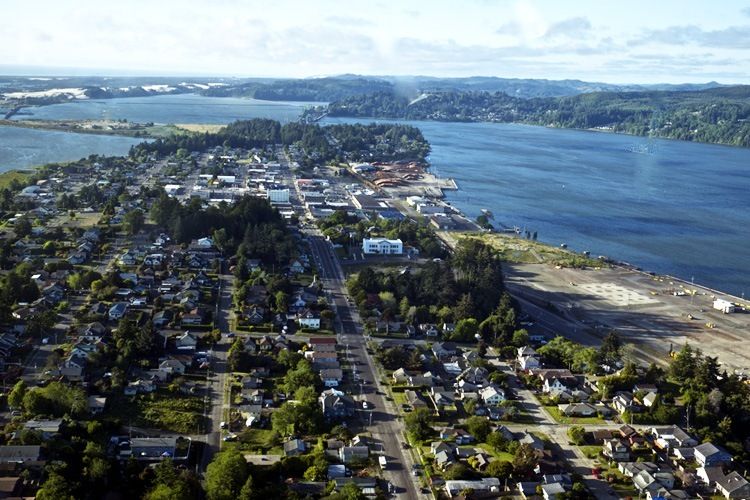
Earthquake and Tsunami Risks Ignored at Proposed LNG Facility on Oregon Coast



For a chilling account of our seismic fate, read the article that many Northwesterners are talking about: the July 20 New Yorker, “The Really Big One.”
As an Oregonian who lives in the danger zone, I have to say that denial is our most common modus operandi. We hope it won’t happen. But taking a personal risk, with knowledge of the consequences, is one thing and taking a public gamble by forcing the entire community and region to be at risk is quite another.
That’s what’s happening at Jordan Cove just north of Coos Bay. Three years ago the State Department of Geology and Mineral Industries provided maps to the county that clearly define the area of the LNG proposal as a “hazard” zone. Yet planning for the facility proceeds on a path greased by the county and the Federal Energy Regulatory Commission. The inevitable earthquake and tsunami will shatter and pound at full force directly on the LNG site with its tanks, tankers and pipelines loaded with one of the most explosive and flammable substances known.
According to the Federal Energy Regulatory Commission’s Draft Environmental Impact Statement, nearly 17,000 people live or work in the project’s hazardous “zones of concern.” Picturing the outcome of a tidal wave at Jordan Cove doesn’t require much imagination; just look to Fukushima in 2011.
We all make personal decisions to live in areas of known danger and—at least until it happens—we think the risk is worth it. But the LNG facility puts many thousands of people at far greater risk. Why would this be worth the cost?
After the short-term building boom, project boosters claim that 146 LNG jobs will result. Even if that number is accurate, it’s only one-third the number that work at Coos Bay’s Mill Casino, posing no danger to those around them.
The other reason for Jordan Cove’s risk is the export of natural gas. Export. We might have all been persuaded by the drive for “energy independence” that has justified fossil fuel development for 40 years across America. But now, at Jordan Cove, our own resources will be depleted in order to fuel China’s rise in the world economy. And in the process, we march down the road of global warming by enabling the fracking of gas across the West and the burning of more fossil fuel for decades to come.
After the inevitable disaster, everyone will say that we should have known better, that the officials on our watch shirked their responsibility, that the risks we all shouldered to make the gas industry richer were not worth the cost.
Goal 7 of the Oregon state land-use law requires “prohibiting the siting of … hazardous facilities … in identified hazard areas, where risk to public safety cannot be mitigated.” Yet one of the most hazardous facilities possible is being planned for the most hazardous landscape in America.
The hazard maps are unambiguous. After several years of LNG preparations, Coos County finally adopted the maps on July 30, but has delayed their effective date for a year. Meanwhile the Goal 7 directive remains unaddressed. Consequences will ripple or explode out to the region, the state and the nation.
Some risks are necessary and worth the cost. This one is not.
Tim Palmer lives on the Oregon coast and is the author of 24 books about the American landscape.
YOU MIGHT ALSO LIKE
How Worried Should We Be About Nuclear Fallout From Fukushima?
President Obama, Your Climate Legacy Lies with Keeping Fossil Fuels in the Ground

 233k
233k  41k
41k  Subscribe
Subscribe 